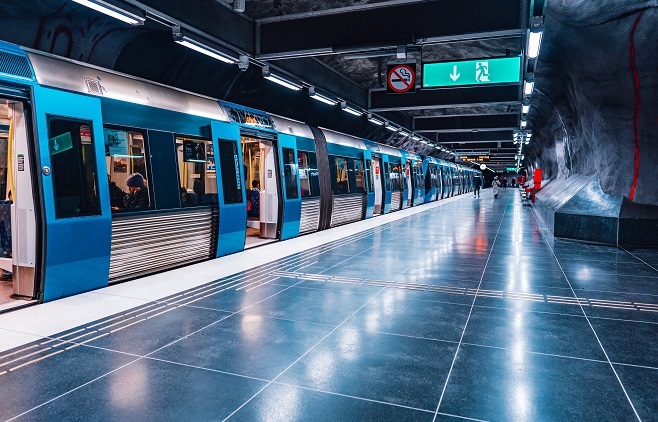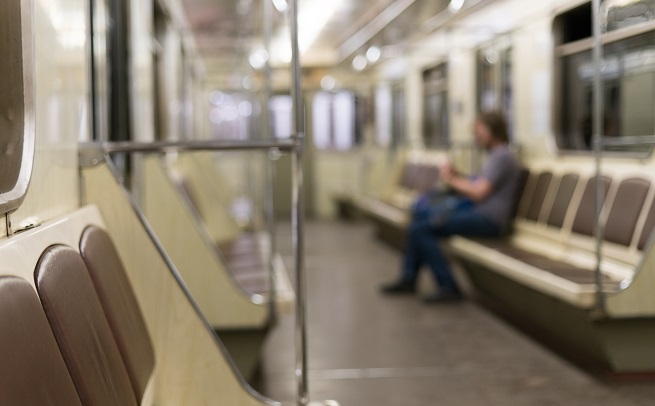
 Data Structure
Data Structure Networking
Networking RDBMS
RDBMS Operating System
Operating System Java
Java MS Excel
MS Excel iOS
iOS HTML
HTML CSS
CSS Android
Android Python
Python C Programming
C Programming C++
C++ C#
C# MongoDB
MongoDB MySQL
MySQL Javascript
Javascript PHP
PHP
- Selected Reading
- UPSC IAS Exams Notes
- Developer's Best Practices
- Questions and Answers
- Effective Resume Writing
- HR Interview Questions
- Computer Glossary
- Who is Who
What is the full form of DMRC?
Introduction
Delhi Metro Rail Corporation (DMRC) was established to build Delhi metro stations and lines in order to reduce traffic on the road.

It's the 2nd oldest metro station in India after Kolkata Metro. It is also one of the busiest metro stations in the country. In this article, you'll learn about DMRC and Delhi metro.
Overview of DMRC
The Delhi Metro was constructed and is run by Delhi Metro Rail Corporation Limited (DMRC), which is jointly managed by both the Government of India and the Government of Delhi. The Delhi metro consists of 10 colour- coded lines namely- Red Line, Yellow Line, Blue Line (consists of 2 lines), Green Line, Violet Line, Airport Express Line, Pink Line, Magenta Line, Grey Line.
A total of 255 stations are served by the Delhi Metro's ten coloured lines, which have a length of 348.12 kilometres (216.31 miles). Broad-gauge and standard-gauge stations are distributed among the system's subterranean, at-grade, and elevated locations.
History of DMRC
In order to establish a smooth running of Mass Rapid Transport System (MRTS), the Delhi Metro Rail Corporation Limited (DMRC) was established on 3rd May, 1995, through the Companies Act, 1956. This corporation is equally managed by the Government of the National Capital Territory of Delhi (GNCTD) and the Central Government.
DMRC inaugurated its first corridor between Shahdara and Tis Hazari on 25 December, 2002. In 2005, it completed the construction of its first 65km metro line before its planned time period. Under its second phase of construction the DMRC completed the construction of 125 kilometres of metro lines within four and a half years.
Today, the Delhi Metro has 286 stations which run across a network of 390.14km. The Delhi metro is also linked to a few cities of its neighbouring states. These include Delhi's border cities namely Gurgaon, Faridabad, Bahadurgarh, and Ballabgarh in Haryana, NOIDA and Ghaziabad in Uttar Pradesh.
The DMRC has also introduced the UTO or Unattended Train Operation technology in Delhi metros. These new generation trains connect the metro lines from Majlis Park to Shiv Vihar and Janakpuri West - Botanical Garden Sections. With the aid of the Communication Based Train Control (CBTC) signalling technology, these trains may move at incredibly fast rates. The Aqua Line between NOIDA and Greater NOIDA is also a part of this network.
For the NOIDA Metro Rail Corporation, DMRC has also built the Aqua Line. Additionally, at the Sikanderpur station of the Yellow Line, the 11.6-kilometer-long Rapid Metro network is connected to the Delhi Metro system. This metro also provides connectivity to the city of Gurugram.
Besides these the Delhi Metro also made history by being the first railway project to claim carbon credits for regenerative braking. These efforts come under the DMRC efforts towards environmental protection and reducing pollution.

Due to such efforts DMRC has also been recognised by the UN as the first metro rail based system in the world that has received carbon credits for decreasing greenhouse gas emissions. It has contributed to reducing pollution by making a 6.3 lakh tonne annual reduction in pollution levels in the city. This has helped in keeping a check on global warming.
In addition to the above mentioned initiatives, the DMRC has also installed rooftop solar power plants in many of its metro stations. Most of the stations that are built now are being built on green structures. Recently, the DMRC has completed the construction of 160 km of Metro lines which will connect Delhi's Ring Road and other number of localities in NOIDA, Ghaziabad, Bahadurgarh, and Ballabgarh.
DMRC's impact on Delhi NCR's Transportation
In India, the Delhi Metro has created a new urban transportation facility. Delhi Metro is posh, contemporary and easily accessible. It has transformed the public transportation system of not only Delhi but also the NCR region completely. Its environmentally friendly swift service is recognized worldwide.
Today, the DMRC stands as an example of technologically enhanced, complex infrastructure project which has not only been completed before time and within budget but also is swift and manageable. This is an example of government success.
Delhi has officially joined the group of international cities with high-speed rail connectivity between the city and the airport due to its Airport Express link that connects the Indira Gandhi International Airport and New Delhi. Over 300 train sets of four, six, or eight coaches are currently available on the DMRC.
The Delhi Metro not only offers convenient public transportation to Delhi residents, but it also makes a substantial contribution to reducing traffic congestion and pollution.
Conclusion
Hence, we can conclude that the DMRC is a successful example of government based developmental projects. It has not only transformed the transportation system of Delhi but has also contributed towards environmental protection and reducing pollution.
FAQs
Q1. Who inaugurated the first Delhi Metro line?
Ans: On December 24, 2002, Atal Bihari Vajpayee, who was the country's then Prime Minister, formally inaugurated the Red Line, which is the first metro line in Delhi.
Q2. Who inaugurated the Yellow Line of the Delhi Metro?
Ans: When the Vishwa Vidyalaya-Kashmere Gate of the Yellow Line was inaugurated on December 20, 2004, the Delhi Metro became the second underground Rapid transit system in India after Kolkata. Manmohan Singh, the country's then Prime Minister, inaugurated this underground line.
Q3. Under which Prime Minister was the DMRC established?
Ans: On May 3, 1995, the Delhi Metro Rail Corporation (DMRC) was officially founded by the governments of Delhi and India under Prime Minister H.D. Deve Gowda. Elattuvalapil Sreedharan served as the company's Managing Director.

